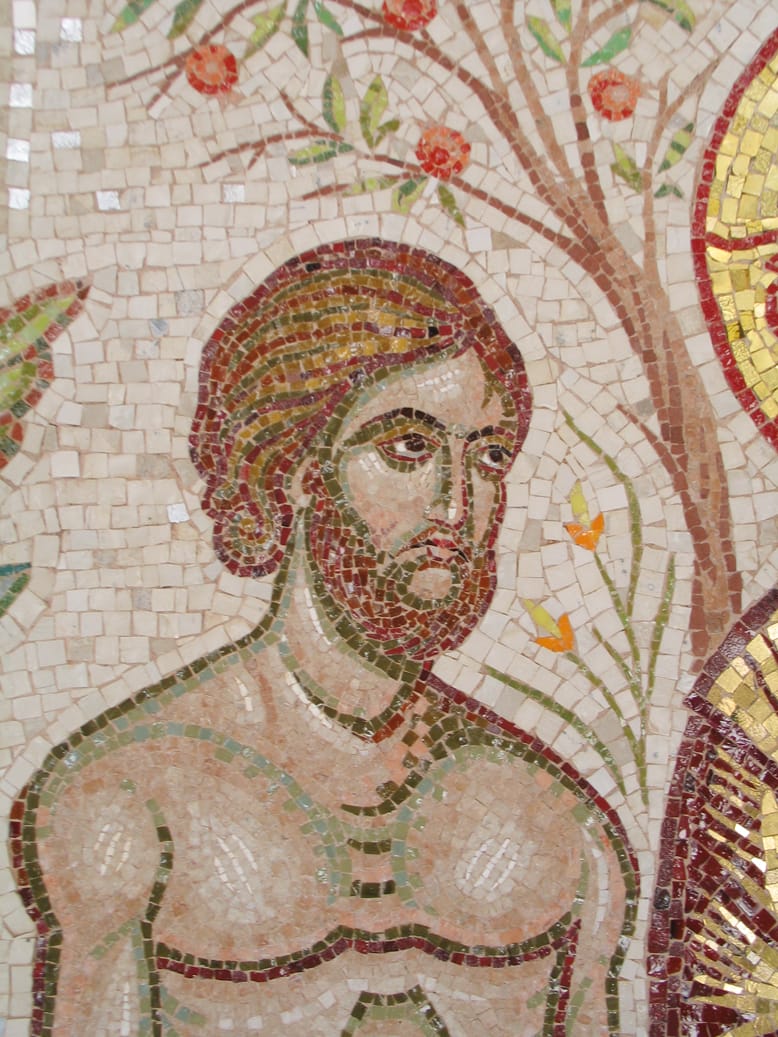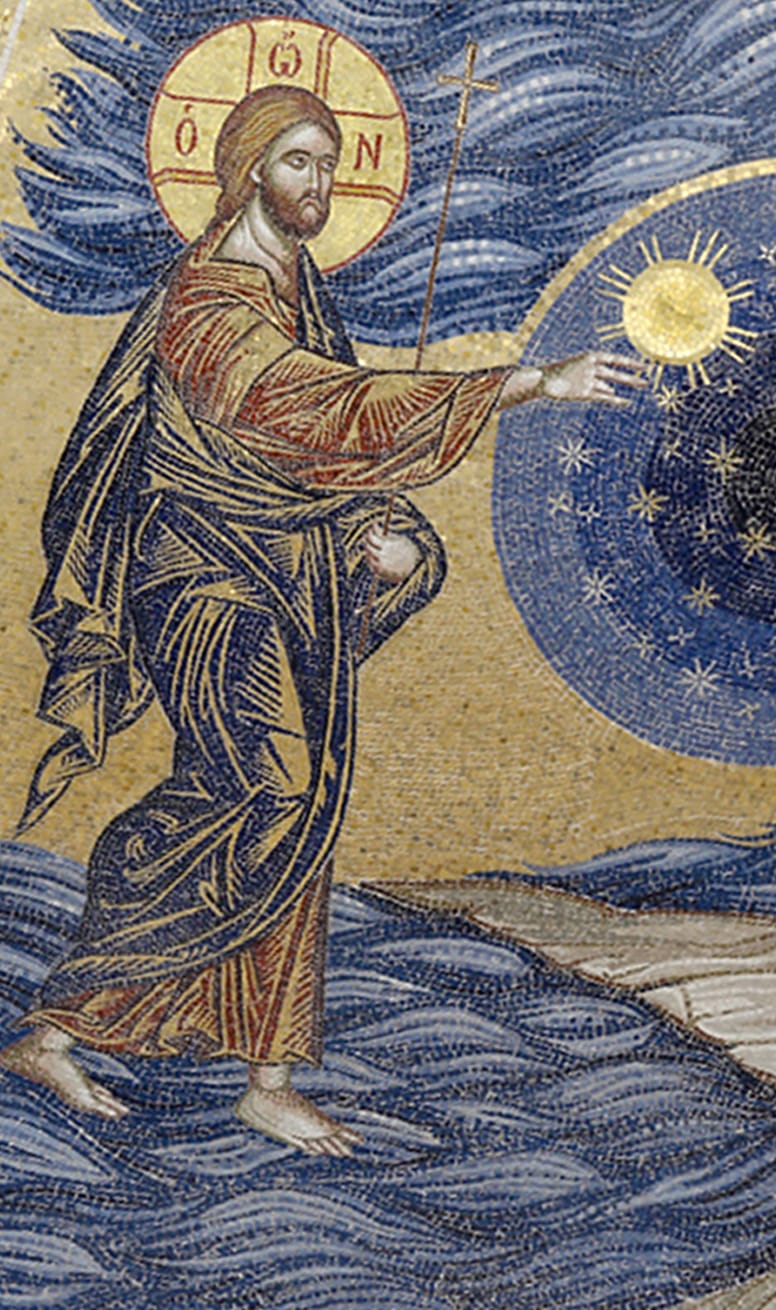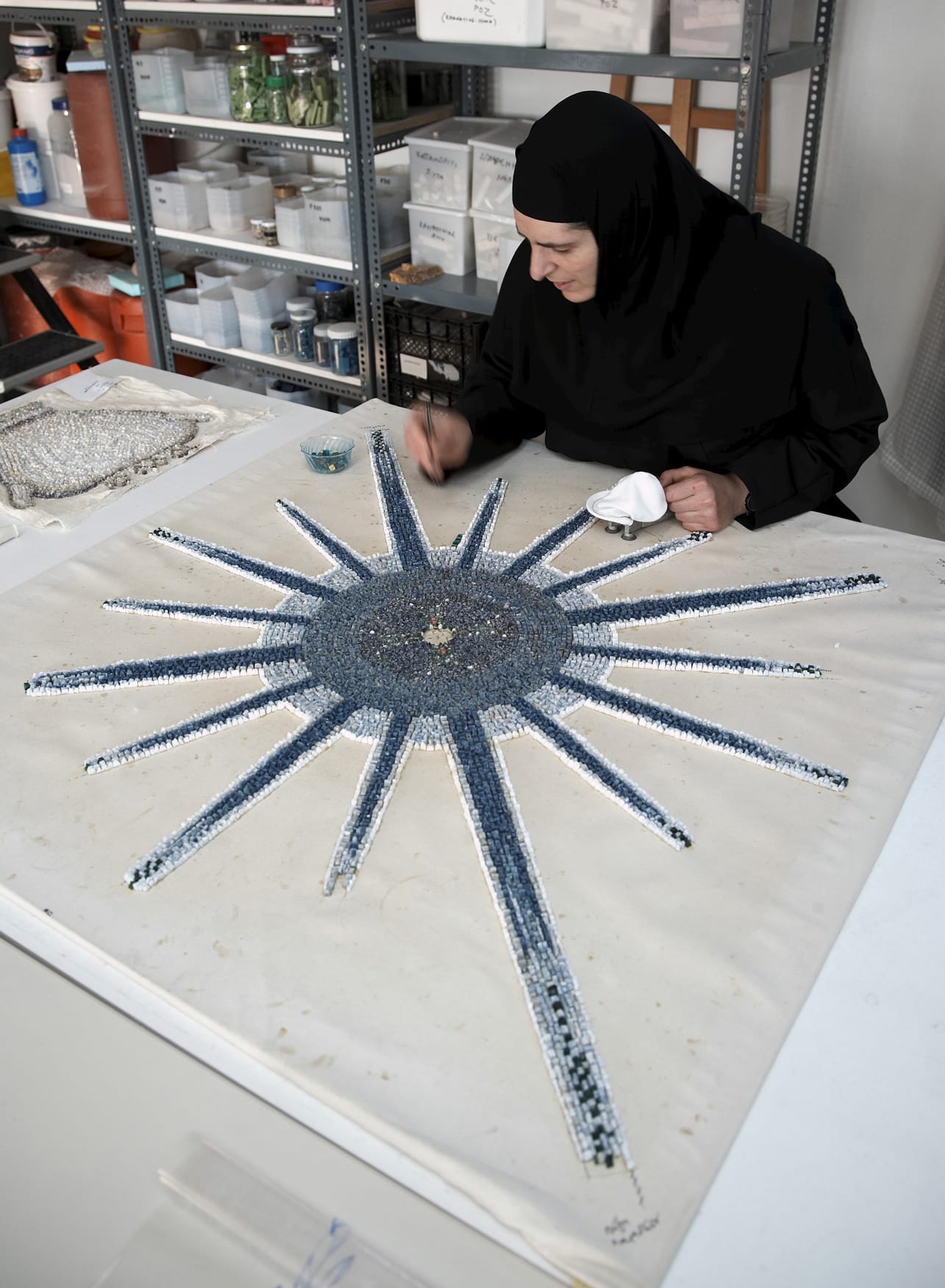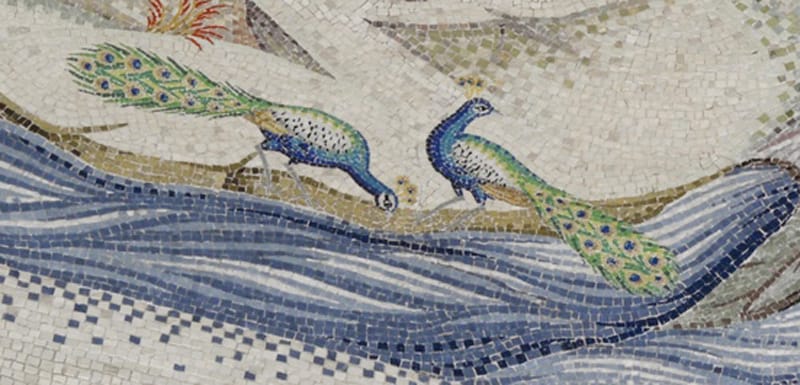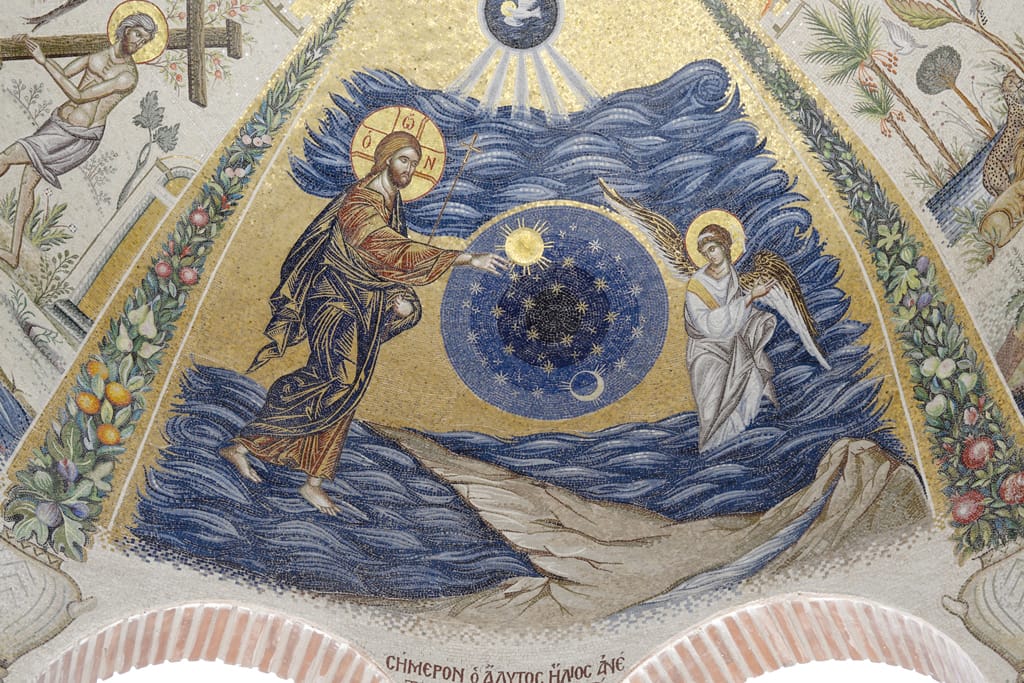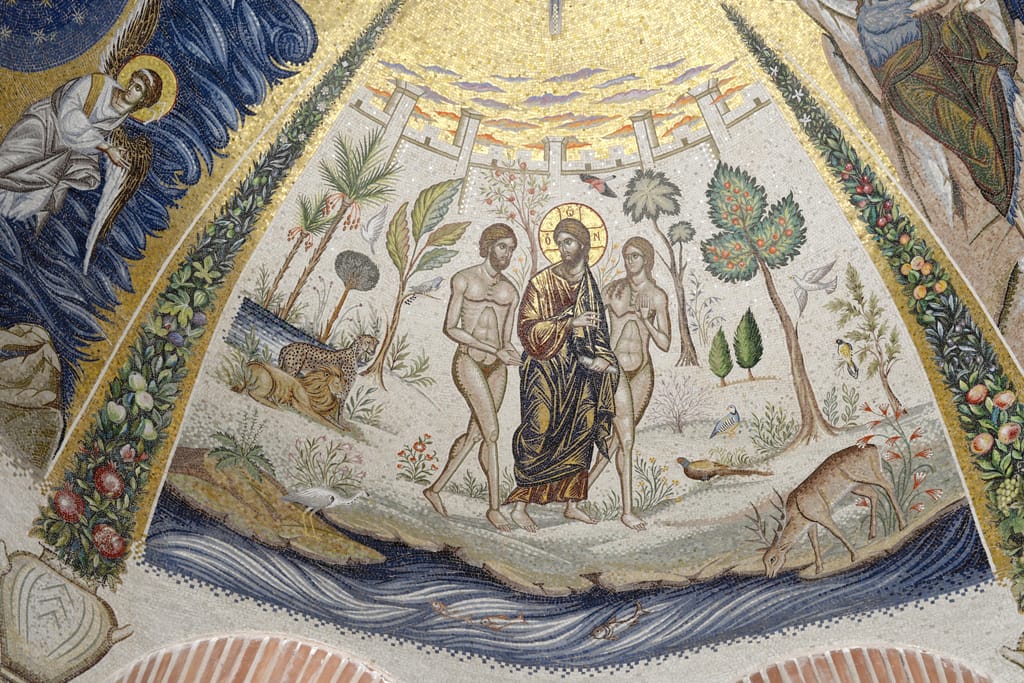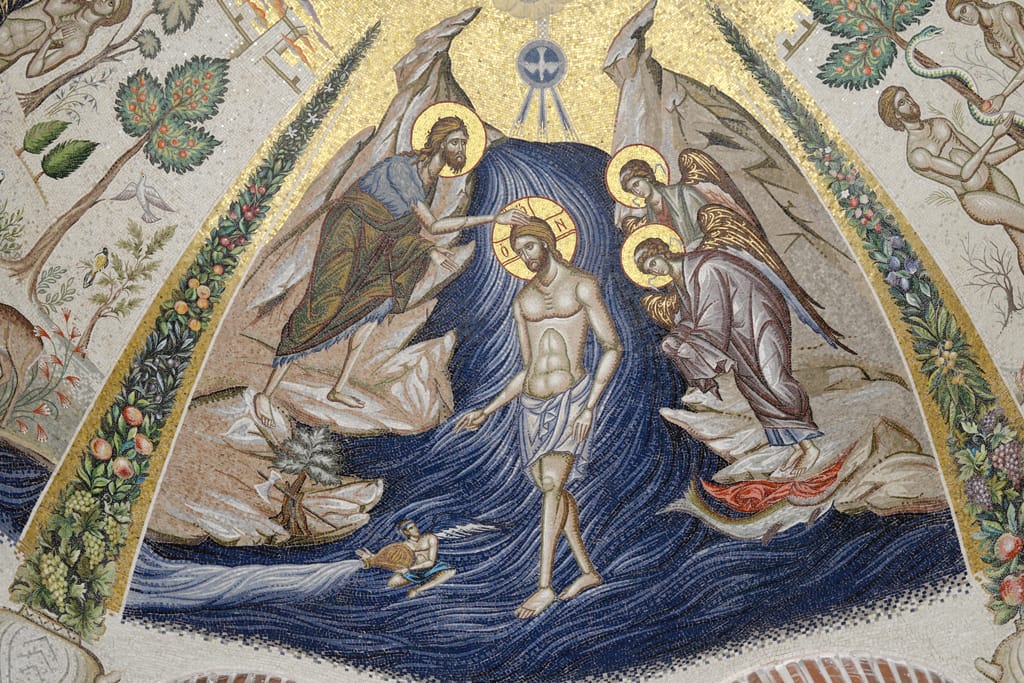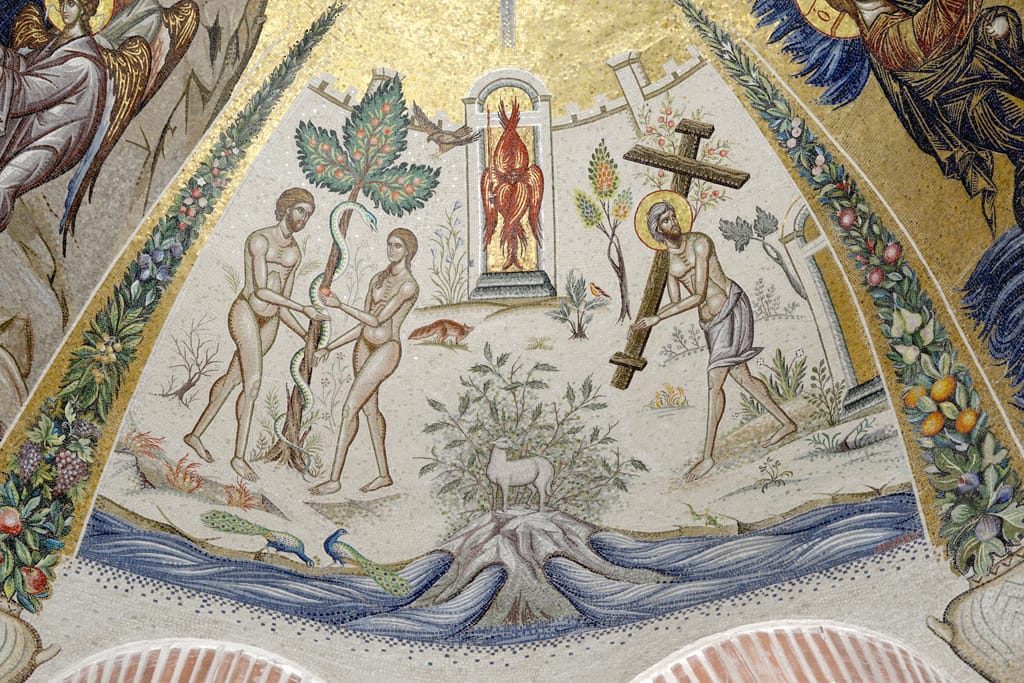Mosaics
Mosaic works adorn arches, fountains and worshipping sites in the courtyards, as well as interior parts of the Convent. Works inspired and made by the nuns, using natural stones and small glass, coloured or gold-leafed tesserrae. The patterns are prepared in the Icon Painting Workshop and executed in the Mosaic Workshop by nuns applying themselves to this task.
Of exceptional crafts(wo)manship and deep theological significance is the mosaic work on the dome of the marble Grand Consecration Phiale outside the entrance to the Katholikon. This is a composition exclusively inspired and laid by the nuns themselves, who worked for years to create a work of art that is truly rare in our days.
The composition is divided into four parts, depicting themes inspired by the Holy Bible and the Feast of Theophany. The images are divided by four tentacles, which emerge from ancient water vases and bear various fruits (symbols of the abundance of paradise and the spiritual fruits of the Holy Spirit), forming a cruciform decorative composition.
At the top of the dome, which symbolises the Heavens, light beams radiatefrom the Byzantine cross; they are symbols of divinity that reach the sources of the deep and sanctify the waters – “And the Spirit of God was hovering over the face of the waters”.
In the first quarter, the composition is inspired by the book of Genesis, where the Creator is seen over the waters: “And God said, ‘Let there be an expanse in the midst of the waters, and let it separate the waters from the waters’.”
The second quarter presentsGod the Word “strolling in the garden in the evening”,and Adam and Eve, before the fall.
The third quarter presents Adam and Eve eating from the forbidden tree (“the tree of the knowledge of good and evil”) and their eviction from Paradise, which was closed to them, with the “Cherubim, and a sword flaming” guarding, while on the other side of this scene there is the grateful thief, entering Paradise bearing his cross on his shoulder: “Adam left Eden because of the tree, and the thief entered Eden because of the tree of the Cross”, which expresses the reconnection of God and man, according to the words of Christ the saviour: “Repent, for the kingdom of heaven is near”.
Finally, the fourth quarter presents the Epiphany, when St. John the Baptist baptised Christ, which connects all three previous themes, depicting the mystery of Divine Economy for the rebirth and theosis of Adam.
